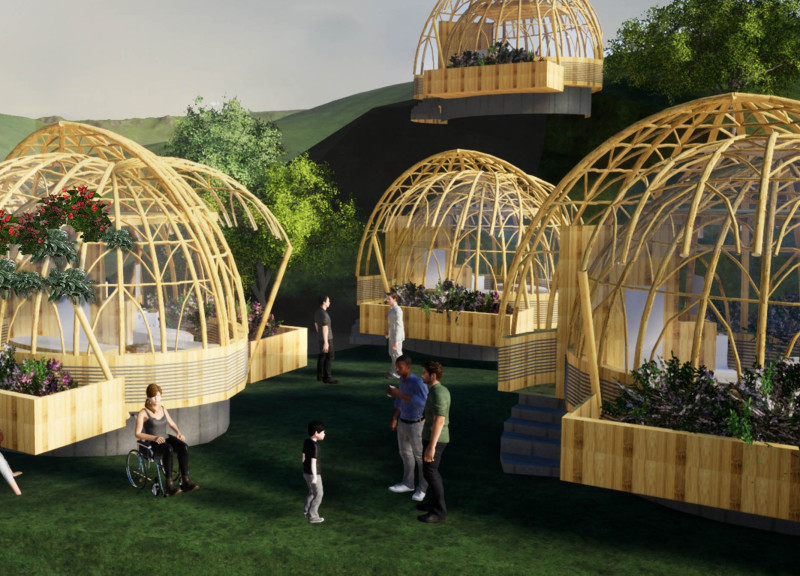5 key facts about this project
The design addresses the issue of land scarcity in urban settings, focusing on the concept of parasitic architecture. Located in cities like Singapore, Hong Kong, Japan, and New York, the objective is to create new living spaces by integrating them into existing structures. The approach seeks to make efficient use of limited space and offers alternative models for urban living, catering to residents such as urban nomads, small families, and startups.
Micro-Living Solutions
Compact homes are proposed for installation on rooftops, maximizing vertical space to create additional housing. This strategy reduces the demand for new ground-level construction while preserving essential land in crowded cities. Each unit prioritizes user comfort and functionality, carefully designed to offer a pleasant living experience despite the constraints of micro-living.
Visual Distinction and Aesthetic Integration
The design features parasitic extensions that visually contrast with their host buildings. This choice highlights the innovative character of the new structures while fostering an engaging relationship with the existing urban environment. The result is an architectural blend that challenges conventional ideas of how buildings can interact with one another and their surroundings.
Sustainable Resource Management
Sustainability is a key focus, with systems in place for managing resources effectively. Each unit captures rainwater and utilizes atmospheric moisture, enabling independence from traditional utility services. This design principle encourages environmentally responsible living, ensuring that residents can minimize their ecological footprint and live sustainably within the urban landscape.
Efficient Construction and Deployment
Logistical considerations play an important role in the project, with flat-pack modular designs that facilitate easy transportation and quick assembly in urban settings. This practical setup makes implementing micro-living solutions more achievable, directly addressing the challenges of urban density.
A noteworthy design detail is the expanded rooftop garden that accompanies the compact units. This feature offers residents green space, blending nature with urban living and enhancing both the aesthetic quality and environmental comfort of the area.






















































